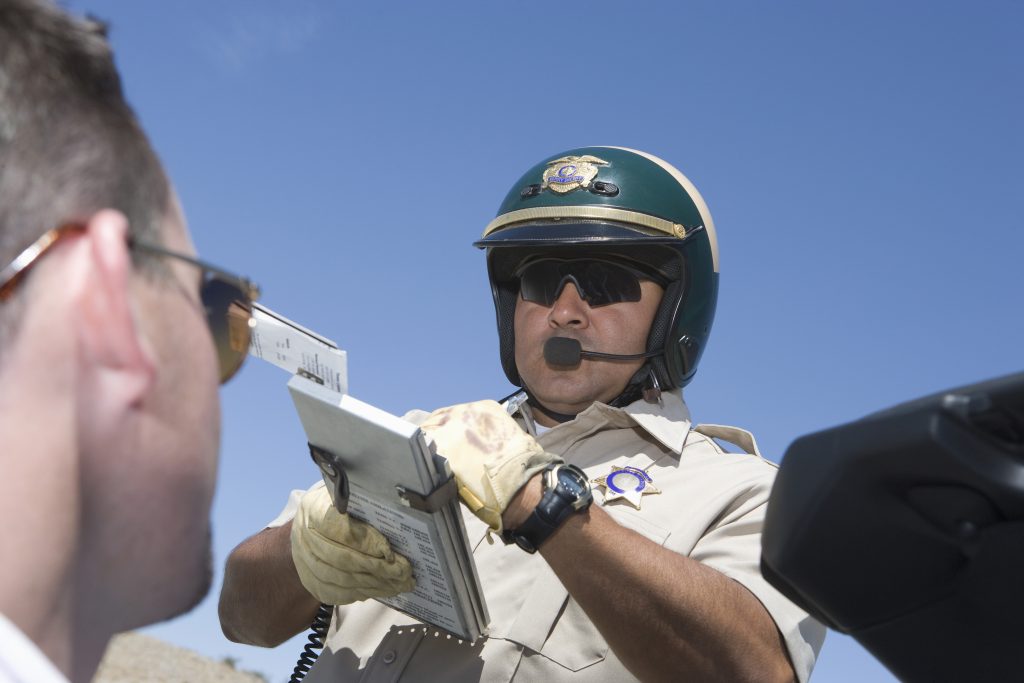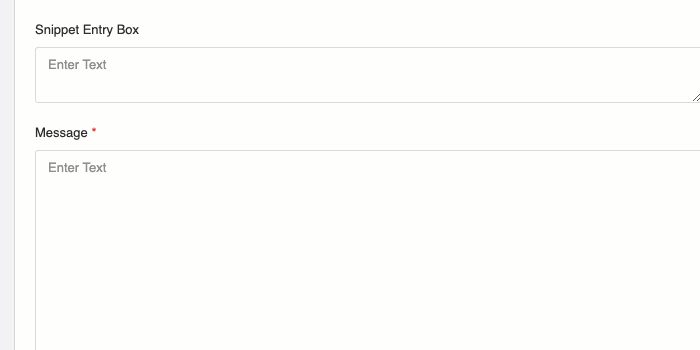by Justin Baeder, PhD

One of the first steps leaders often take when they're thinking about classroom walkthroughs is to design or select a form, to be filled out during or immediately after each visit.
In this article, we'll talk about the right opportunities to use forms, and how to design them to achieve your goals as an instructional leader. We'll also look at alternatives to forms, for situations where there's a better option.
Let's start by looking at some of the advantages of forms, and what purposes they're a good fit for fulfilling.
Two Advantages of Forms
Forms have two primary advantages over other forms of documentation:
- Form fields organize key types of information—for example, if you're filling out a Google Form, each field on the form will save its data to a separate column in the matching Google Sheets spreadsheet.
You can then analyze this information later without having to reorganize it. For quantitative analysis, all numbers in a given column have the same meaning, such as “percentage of students on task” or “learning target posted (yes/no).”
For qualitative analysis, all words in a given column will correspond to the same area of focus—for example, it would be easy to make separate word clouds of teacher questions and student comments.
This organization up front—from the moment of data collection—makes analysis much easier, especially across large numbers of classrooms. - Forms focus the observer's attention on specific issues, narrowing down the overwhelming torrent of information to a manageable amount.
Classrooms are complex, dynamic environments, and it can be difficult to decide what to pay attention to and what to document during an informal observation.
Forms essentially allow these decisions about focus to be made in advance, at the time the form is designed.
It's important not to sidestep this set of decisions by making an excessively long form aimed at capturing everything. Laundry-list forms with a dozen or more fields tend to be difficult to use, and therefore seldom-used.
Forms can be the perfect tool for focused data collection. However, these specific features also mean that while forms are tailor-made for certain situations, they aren't the best fit for every goal.
When Forms Are The Right Tool for Teacher Observations
Forms are a good fit for the following classroom observation scenarios:
When You Need Structured Data
Forms are a favorite tool of researchers, because they produce structured data that is easy to analyze. This makes forms useful for collecting district-level data to inform district-level decisions.
If you are embarking on a district-wide data collection endeavor, it's essential to determine what information you need and how it will be operationalized. For example, if you are collecting data on student engagement, it's essential to specify what “engaged” and “not engaged” look like.
When You Are Using Untrained Observers
Forms eliminate much of the need for expert judgment, so collecting district-level data can be done by hourly staff, graduate students, volunteers, or others who may lack instructional leadership experience and training.
Because district administrators often work directly with principals, who are in classrooms anyway, it can be tempting to ask principals and their assistant principals to collect data to inform district-level priorities.
(Especially if such a request serves the dual purposes of collecting data and nudging administrators to get into classrooms.)
However, school administrators are a poor choice for data collection:
- They're among the busiest and highest-paid employees
- Teachers change their behavior when administrators are in the room
- Everyone may feel compelled to show district leaders what they want to see, such as high engagement and fidelity of implementation of district priorities
- Administrators have extensive knowledge of teachers that may distort data collection
That's why, as I suggest in Chapter 3 of Now We're Talking! 21 Days to High-Performance Instructional Leadership, district leaders should partner with university researchers or nonprofit organizations to plan and conduct data collection.
If you don't have a local university that can help, consider using your central office staff, such as curriculum, instruction, and assessment leaders.
This preserves the ability of school administrators to maintain their supervisory relationships with teachers, without the pressure to produce data that tell a preferred story.
When You Don't Need Context or Nuance
Operationalizing the data you will collect in specific terms is essential. Otherwise, individual nuances will make it difficult to compare data across classrooms.
This means that big concepts like “Rigor” are difficult to capture on a form.
Rigor is complex and multifaceted, and hard to assess quickly even if you have a clear, shared definition—such as an instructional framework, as I describe with my co-author in Mapping Professional Practice: How to Develop Instructional Frameworks to Support Teacher Growth.
Download: High Expectations for Student Learning (including rigor) framework »
While this doesn't mean that all data you collect needs to be quantitative in nature, the more sharply defined, the better.
Otherwise, data collection may not be the best approach. For example, assessing and improving rigor may be more successful through a conversation-oriented approach, as I describe in Now We're Talking! 21 Days to High-Performance Instructional Leadership.
When You Just Need To Document the Visit
If you just need to track classroom visits or observations, without documenting any specific form of evidence or feedback, forms can make the process simple and near-automatic.
For example, Google Forms will automatically time- and date-stamp all form submissions, so if you want to simply document your visits to each classroom, your form only needs one field—the teacher's name.
This could be a dropdown, multiple-choice, or short text field. Google Sheets will automatically create a spreadsheet to hold your form's data, and the first column will contain the date and time.
Note: if you're looking for a low-tech way to keep track of your classroom visits, check out our Classroom Visit Index Card template.
When You Don't Need To Send Anything To The Teacher
Forms are great for data collection that isn't intended as feedback for the teacher—for example, to monitor district-level implementation of certain initiatives.
If you need to send something to the teacher, just use plain text, such as:
- A regular email
- A handwritten note
- Your typed observation notes
Even better, have a face-to-face conversation prior to one of the above.
I strongly advise against sending form submissions to teachers.
It's technically feasible—and we have a detailed article on how to use Google Forms with the AutoCrat plugin to email teachers directly—but I don't recommend this approach.
Why? Simply put, because no one likes to receive forms.

Almost every type of form people receive contains bad news:
- A speeding ticket
- A police report
- A medical examination
These are not the kinds of interactions we want to bring to mind when giving teachers feedback.
If you're giving written feedback or making written comments of any kind, just share them in normal writing, either handwritten or typed.
Read more: Classroom Walkthrough FAQ for Instructional Leaders
When There's Nothing Deeper To Consider
At The Principal Center, we like to think of teacher practice like an iceberg:

90% or so is hidden beneath the surface.
For example, in Charlotte Danielson's Framework for Teaching, only domains 2 and 3 (Learning Environments & Learning Experiences) are directly observable during class time.
Domains 1 and 4 (Planning and Preparation & Principled Teaching) are difficult to see directly, since they happen behind the scenes, outside of class time, or entirely in teachers' minds as they think about their teaching.
To gain insight into these hidden domains of teacher practice, it's almost always necessary to have a conversation.
And even for the directly visible elements of practice, such as giving instructions, it's not just what teachers visibly do that matters—we're also interested in the thinking behind their actions.
Read more: The Iceberg: Seeing Beneath the Surface of Teacher Practice
If you're filling out a form, chances are good you're doing so before talking with the teacher.
That means we need to limit our use of forms to areas of practice where there's no ambiguity, such as:
- Is the learning target posted on the board?
- Are students using technology?
- How many students are called on, by gender ?
These types of questions lend themselves to form-based data collection, but they're not the kinds of questions that lead to the richest feedback conversations.
Narrow Focus, Or Eyes Wide Open?
Perhaps the biggest reason to think twice before using forms is their attention-narrowing function.
Given your goals, would it be helpful to narrow your focus to certain issues specified on a form, or would it be counterproductive?
For specific data-collection purposes, a form may be the right tool. It'll help you tune out distractions and collect only the data you need.
But if you're just getting into classrooms as part of your normal instructional leadership work, forms are likely to narrow your focus to an unhelpful extent. It's better to just immerse yourself in the classroom and let what's happening guide your focus.
For example, if your form focuses on student engagement and questioning strategies, yet students are working on revising their essays, what should you do? Giving the teacher feedback on questioning strategies they aren't using would be a waste of time.
Trying to fill out a form that doesn't really fit what's going on in the classroom is likely to be unpleasant and unproductive for everyone.
It's far better to visit each classroom with your eyes wide open, taking in the whole environment and deciding, in the moment, what to focus on.
Or as I like to say, just be “Present and Pleasant.”
Asking Better Questions & Having Better Conversations
The best feedback conversations involve authentic questions that get teachers talking about the evidence and sharing their thinking. Here are 10 you can use—also included on the back of our notecards:
- Context: I noticed that you [ ]…could you talk to me about how that fits within this lesson or unit?
- Perception: Here’s what I saw students [ ]…what were you thinking was happening at that time?
- Interpretation: At one point in the lesson, it seemed like [ ]… What was your take?
- Decision: Tell me about when you [ ]… What went into that choice?
- Comparison: I noticed that students [ ]… How did that compare with what you had expected to happen when you planned the lesson?
- Antecedent: I noticed that [ ]… Could you tell me about what led up to that, perhaps in an earlier lesson?
- Adjustment: I saw that [ ]… What did you think of that, and what do you plan to do tomorrow?
- Intuition: I noticed that [ ]… How did you feel about how that went?
- Alignment: I noticed that [ ]… What links do you see to our instructional framework?
- Impact: What effect did you think it had when you [ ]?
Substantive Documentation: Just Use Text
If you want to document what's happening in classrooms, as part of your feedback conversations with teachers and/or the broader teacher supervision and evaluation process, just take notes.
You can use paper and pen, or an app like Repertoire.
Repertoire's Snippets feature makes it easy to re-use common phrases to minimize typing.
And every phrase you enter can be timestamped, allowing you to reconstruct the flow of the lesson when you're talking about it with the teacher.
Best of all, the teacher just gets a normal email, not a form—so you get the speed and efficiency of using a form, without the impersonal feel.
Learn More: Classroom Walkthrough FAQ
If you'd like to learn more about our approach to classroom walkthroughs at The Principal Center, read our FAQ.
Have other questions? Leave a comment.
Leave a comment below if you have other questions about classroom walkthroughs.

About the Author
Justin Baeder, PhD is Director of The Principal Center, where he helps senior leaders in K-12 organizations build capacity for instructional leadership by helping school leaders:
- Confidently get into classrooms every day
- Have feedback conversations that change teacher practice
- Discover their best opportunities for student learning
He holds a PhD in Educational Leadership & Policy from the University of Washington, and is the host of Principal Center Radio, where he interviews education thought leaders.
His book Now We're Talking! 21 Days to High-Performance Instructional Leadership (Solution Tree) is the definitive guide to classroom walkthroughs.


